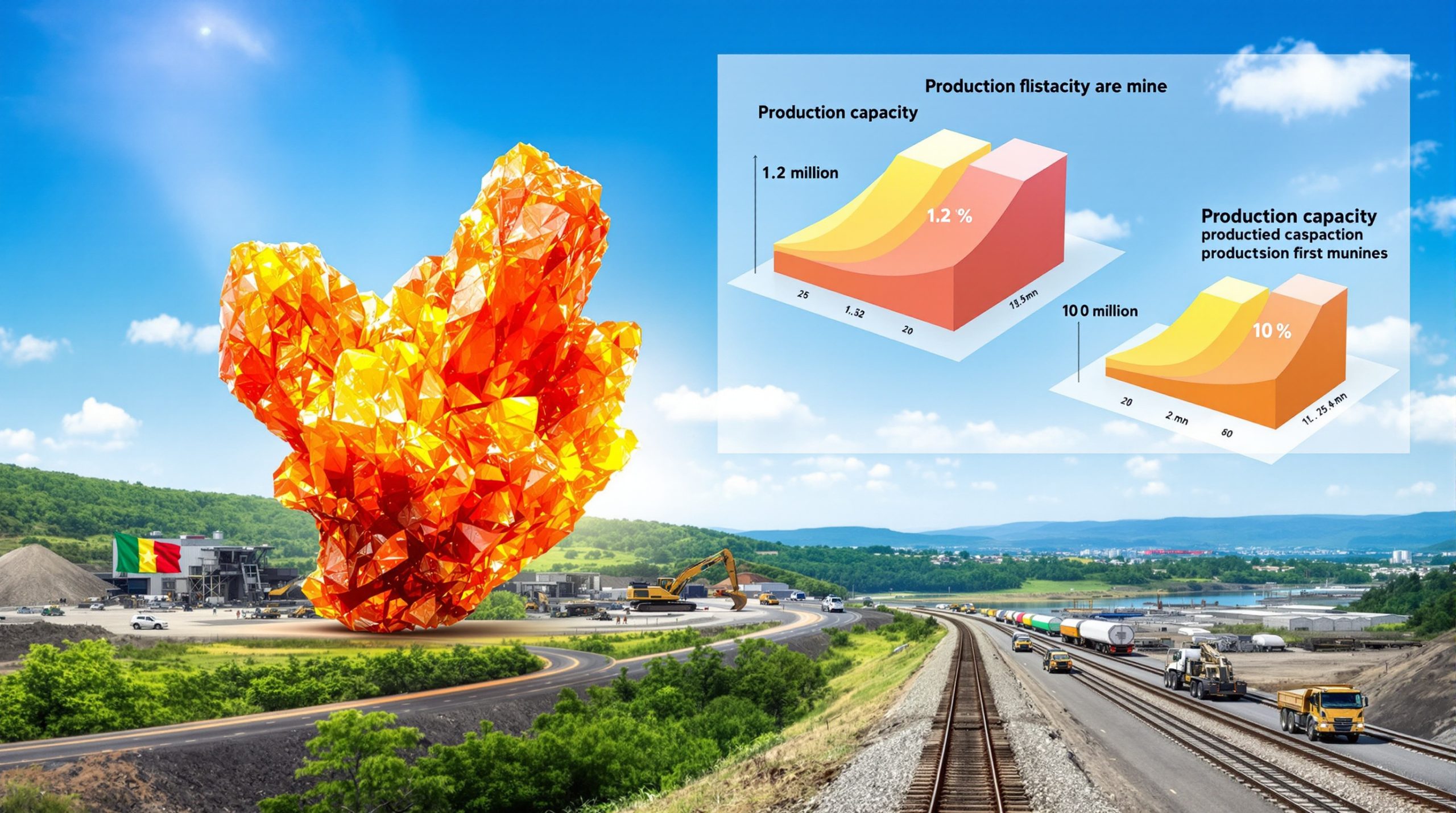Understanding US Export Controls on Recycled Copper: Impacts and Alternatives
The recycled copper industry sits at a critical crossroads as policymakers consider potential export controls that could fundamentally reshape domestic and international markets. With significant economic, environmental, and national security implications at stake, understanding the full spectrum of impacts is essential for informed decision-making regarding copper investment strategies.
The Scale of US Copper Recycling Surplus
The United States consistently produces approximately 800,000 tonnes more recycled copper annually than domestic demand requires, creating a substantial surplus that naturally flows to international markets. This material balance highlights the fundamental mismatch between domestic processing capacity and consumption.
Between 25-30% of all recycled copper materials processed in the US are exported to over 100 countries worldwide, creating a global network of interdependent supply chains that have developed over decades. These relationships provide critical market stability and economic resilience for the recycling sector.
"Our industry's health and success depend on two key things: a strong domestic manufacturing base but also access to global markets," explains Robin Wiener, President of the Recycled Materials Association (ReMA).
In 2024 alone, the US exported $27 billion worth of recycled materials across all commodities while simultaneously importing $7 billion worth, demonstrating the complex, multi-directional nature of these material flows. This two-way trade reflects global specialization and regional processing advantages that benefit the broader economy.
Economic Significance of the Export Market
For recyclers, particularly those on the West Coast, export markets often represent the most economically viable option for their materials. The geographical reality is that shipping costs from California to Southeast manufacturing hubs frequently exceed the cost of shipping to international destinations across the Pacific.
Export markets serve several critical functions:
- Acting as a pressure release valve when domestic consumption fluctuates
- Ensuring processing operations remain economically viable year-round
- Supporting thousands of jobs in collection, processing, and logistics
- Maintaining price stability through market diversification
Without access to these international markets, many recycling operations—especially smaller and medium-sized processors—would face severe economic challenges that could threaten their continued operation.
Why Are Export Controls Being Considered?
In today's increasingly protectionist trade environment, policymakers are exploring export controls on recycled copper as part of broader efforts to strengthen domestic manufacturing and address perceived national security concerns.
Arguments From Control Proponents
Advocates for export restrictions primarily focus on four potential benefits:
- Increased domestic supply – Keeping recycled copper within US borders could theoretically increase material availability for domestic manufacturers
- Price pressures – Proponents suggest that greater domestic supply might reduce costs for US copper consumers
- National security – Some argue that material retention strengthens strategic industries and reduces dependence on international suppliers
- Manufacturing revival – Restrictions align with broader policies aimed at rebuilding domestic production capacity
These arguments have gained traction as part of wider conversations about supply chain resilience and critical material security, particularly in the wake of recent global disruptions.
Section 232 Investigation Context
The Department of Commerce is currently conducting a formal investigation into copper supply chains under Section 232 of the Trade Expansion Act, which authorizes the executive branch to restrict imports on national security grounds. While traditionally focused on imports, similar mechanisms are being considered for export controls.
This investigation represents a significant development for the industry, as Section 232 findings could lead to sweeping policy changes with immediate market impacts. Industry stakeholders, including ReMA, have filed formal responses highlighting potential unintended consequences of export restrictions.
The investigation follows similar actions taken with other strategic materials in recent years, establishing a concerning precedent for the recycling sector. The final determination will weigh national security considerations against broader economic impacts, including potential job losses and reduced recycling rates.
What Would Be the Unintended Consequences of Export Controls?
While export controls may seem like a straightforward solution to increase domestic copper supply, historical precedents and market dynamics suggest they would likely trigger a cascade of negative consequences.
Short-Term Market Disruptions
The immediate effect of export controls would be a sudden oversupply in domestic markets as material previously destined for international buyers remains in the US. This rapid market flooding would likely cause:
- Price collapse – Domestic recycled copper prices would plummet due to excess supply
- Reduced collection – Lower prices would decrease incentives to collect and process recyclable copper
- Economic instability – Recyclers would face severe revenue shortfalls, threatening business viability
- Employment impacts – Job losses would concentrate in collection, processing, and logistics roles
"If export controls go into effect, they flood the domestic market with material, pushing prices way down in the short term," warns Wiener. "This would severely harm recyclers' economic viability."
For many recycling operations, especially those on the West Coast and smaller processors nationwide, these impacts could prove insurmountable, leading to facility closures and permanent capacity loss.
Long-Term Industry Damage
The historical precedent from 1970s ferrous scrap restrictions provides a sobering case study. After initial price declines, the market eventually adjusted as collection and processing capacity diminished—leading to prices rising above pre-control levels.
Long-term consequences would likely include:
- Reduced investment in recycling technology and infrastructure as economic returns diminish
- Diminished capacity to improve material quality for domestic manufacturers
- Permanent job losses, particularly among smaller processors and West Coast operations
- Environmental setbacks as more material ends up in landfills rather than recycling streams
The recycling industry operates on thin margins and requires substantial capital investment. Export controls would undermine the economic foundation necessary for these investments, potentially setting the sector back decades.
Supply Chain Elasticity Issues
Recycled copper markets respond to price signals and demand conditions—not regulatory mandates. Without viable economic pathways, much material would remain uncollected or unprocessed, creating several structural problems:
- Geographic disparities would intensify as coastal recyclers face higher shipping costs to reach domestic buyers
- Small processors may exit the market entirely, reducing collection capacity in many communities
- Material quality could decline as investments in processing technology decrease
- Supply fluctuations would become more severe without the buffer of international markets
These elasticity issues mean that forcing material to stay domestic doesn't guarantee it will be used—it might simply never enter the recycling stream at all.
How Would Export Controls Affect International Relations?
Export restrictions rarely exist in isolation. Their implementation would likely trigger significant responses from trading partners with ripple effects across multiple industries.
Potential Retaliatory Measures
Trading partners affected by US export controls would have strong incentives to implement reciprocal barriers, potentially affecting:
- US access to critical components and materials from international sources
- Export opportunities for other US industries and commodities
- Broader trade relationships that extend beyond recycled materials
- International operations of US-based companies
"Cut off exports, and much of that material won't even be processed. […] We can't ignore the risk of retaliation," notes Wiener. "The US copper industry depends on the import of copper from other countries."
These retaliatory measures could potentially harm US interests far more than any benefits gained from keeping recycled copper domestic, creating a negative-sum outcome for all parties involved. Additionally, trade war impact on copper prices could be substantial.
Global Market Positioning
US recyclers have worked for decades to establish competitive positions in international markets, developing relationships, logistics networks, and quality assurances that meet global standards. Export controls would surrender this hard-won market share to competitors in other countries, with several consequences:
- Reduced US influence in setting global standards for recycled materials
- Lost revenue opportunities as international buyers develop alternative supply chains
- Diminished innovation exchange as US firms become isolated from global technological developments
- Weakened overall position in the global circular economy
Once surrendered, these market positions would be extremely difficult to reclaim, even if export controls were eventually lifted.
What Alternatives Could Better Support the Copper Recycling Industry?
Rather than restricting exports, policymakers could pursue more balanced approaches that strengthen domestic recycling capacity while maintaining global competitiveness.
Infrastructure Investment Incentives
A range of policy tools could boost domestic recycling infrastructure without disrupting international markets:
- Tax credits for recycling infrastructure investments to stimulate domestic capacity
- Grant programs addressing "recycling deserts" in underserved communities
- Public-private partnerships driving innovation in processing technology
- Research funding for advanced sorting and purification methods
These approaches would increase domestic recycling capacity through positive incentives rather than restrictive measures, creating a more sustainable long-term solution.
"What we need instead are […] public-private partnerships to drive innovation," says Wiener, highlighting the industry's preference for collaborative approaches.
Supporting legislation that enhances local recycling infrastructure represents a win-win scenario for recyclers, manufacturers, and communities, aligning economic and environmental goals.
Industry Success Stories Without Export Controls
Market-based solutions are already driving significant investments in domestic copper recycling and manufacturing:
- Aurubis, Wieland, and Ames Copper have invested hundreds of millions in US operations without export restrictions
- These investments demonstrate that economic forces naturally drive capital toward viable domestic opportunities
- Collaborative approaches between industry associations like ReMA and the Copper Development Association are fostering growth
- Focus on strengthening domestic manufacturing while maintaining global competitiveness is yielding results
These success stories show that punitive measures like export controls aren't necessary to stimulate domestic investment—they may actually hinder it by reducing overall industry profitability and capacity for capital formation.
How Does the Recycled Copper Market Support National Security?
Contrary to concerns that might justify export controls, the current recycling ecosystem actually enhances national security through flexibility and resilience.
Current Supply Adequacy
The evidence suggests that national security applications face no material shortages under current conditions:
- No documented shortfalls of recycled copper for defense or critical infrastructure applications
- Sufficient domestic availability for national security manufacturing needs
- Enhanced industry resilience through economic sustainability provided by export markets
- Supply chain flexibility during disruptions thanks to global relationships
"There's plenty of recycled copper to meet national security and domestic manufacturing supply needs," confirms Wiener, addressing a central concern in the export control debate.
The current system, which allows market-based allocation of materials, has successfully met national security requirements while supporting a thriving recycling sector. The recent executive order on critical minerals has also influenced policies in this area.
Balance of Strategic Interests
Policymakers must carefully weigh short-term protectionist impulses against long-term industry health when considering export controls:
- Robust domestic recycling infrastructure requires economic sustainability
- Force-feeding material to domestic markets doesn't guarantee its productive use
- Broader economic impacts extend far beyond immediate price effects
- National security depends on industry resilience more than material hoarding
A truly strategic approach would focus on strengthening the entire recycling ecosystem through positive incentives rather than restrictive measures that could ultimately weaken it.
FAQ: Common Questions About US Copper Recycling and Export Controls
Would export controls lower prices for US manufacturers?
While prices might temporarily decrease due to market flooding, historical evidence suggests they would eventually rise above current levels as recycling capacity diminishes. The 1970s ferrous scrap restrictions demonstrate this counterintuitive outcome, where short-term price decreases led to long-term price increases once collection and processing capacity contracted.
How many countries receive US recycled copper exports?
US recycled materials are exported to more than 100 countries worldwide, creating a diverse and resilient market network. This global reach helps stabilize prices and ensures continuous operation of recycling facilities regardless of domestic demand fluctuations.
What percentage of US recycled copper is currently exported?
Approximately 25-30% of recycled copper processed in the US is exported to international markets. This percentage represents material that exceeds domestic demand, highlighting the fundamental mismatch between processing capacity and consumption that drives exports.
How would small recyclers be affected by export controls?
Small recyclers, particularly those on the West Coast, would face severe economic pressure due to geographic shipping disadvantages and reduced market options. Many would likely be forced to close operations, reducing overall collection capacity and potentially creating recycling deserts in affected communities.
What alternative policies could strengthen domestic copper recycling?
Tax incentives, infrastructure investments, collection system improvements, and public-private partnerships offer more sustainable approaches than export controls. These policies would increase domestic capacity through positive incentives rather than restrictive measures, creating a win-win scenario for recyclers, manufacturers, and communities.
Comparing Policy Approaches to Strengthening US Copper Recycling
| Policy Approach | Short-Term Impact | Long-Term Impact | Industry Support | Implementation Complexity |
|---|---|---|---|---|
| Export Controls | Price reduction | Supply reduction | Low | Moderate |
| Tax Incentives | Investment boost | Capacity growth | High | Moderate |
| Infrastructure Funding | Collection improvement | Sustained growth | High | High |
| Public-Private Partnerships | Innovation acceleration | Technology advancement | High | Moderate |
| Status Quo | Market stability | Continued exports | Mixed | Low |
This comparison illustrates the stark difference between export controls and alternative approaches. While controls might appear to offer immediate price benefits, their long-term impacts would likely prove counterproductive, undermining the very goals they aim to achieve.
Key Stakeholders in the US Recycled Copper Debate
Industry Organizations
- Recycled Materials Association (ReMA) – Represents 1,700+ companies in 40+ countries with a focus on maintaining market access and operational viability
- Copper Development Association (CDA) – Emphasizes domestic manufacturing strength while recognizing the importance of recycling
- The Recycling Partnership – Collaborates with ReMA on infrastructure improvement legislation to increase domestic recycling capacity
These organizations have been actively engaged in the Section 232 investigation process, providing data and perspective on potential impacts of export controls.
Government Entities
- US Department of Commerce – Conducting the Section 232 investigation into copper supply chains
- Trade policy officials – Evaluating national security implications of current material flows
- Environmental regulators – Concerned with maintaining high recycling rates and sustainability metrics
The interplay between these government stakeholders will ultimately determine whether export controls are implemented and in what form.
Market Participants
- Small and medium recyclers – Most vulnerable to export restrictions due to thin margins and geographic constraints
- Large integrated processors – Better positioned to adapt but still generally opposed to controls
- Domestic manufacturers – Seeking stable supply at competitive prices, with mixed perspectives on controls
- International trading partners – At risk of losing access to US materials, with potential for retaliatory measures
Each of these participants brings different priorities and concerns to the debate, creating a complex stakeholder landscape that policymakers must navigate.
The recycled copper export control debate ultimately centers on a fundamental question: Would restrictions actually achieve their stated goals of strengthening domestic manufacturing and enhancing national security? The evidence suggests they would likely have the opposite effect, undermining the very recycling infrastructure necessary for a resilient domestic supply chain.
Rather than restricting exports, policymakers would be better served by investing in domestic recycling capacity through positive incentives, allowing market forces to naturally increase material availability while maintaining the economic viability of the recycling sector. This balanced approach would better serve both short-term economic needs and long-term strategic interests, particularly in light of the current global copper supply forecast and mining investment opportunities.
Further Exploration:
Readers interested in learning more about the recycled copper market and export policies can explore related educational content from industry resources such as Fastmarkets, which provides market analysis on metals and commodities markets, or review the REMA copper sector analysis on strategic considerations for the industry.
Want to Capitalise on the Next Mineral Discovery?
Don't miss out on transformative ASX mineral discoveries—Discovery Alert's proprietary Discovery IQ model delivers instant notifications on significant finds, giving you a crucial market advantage. Explore historical returns from major discoveries and begin your 30-day free trial today at Discovery Alert's discoveries page.




